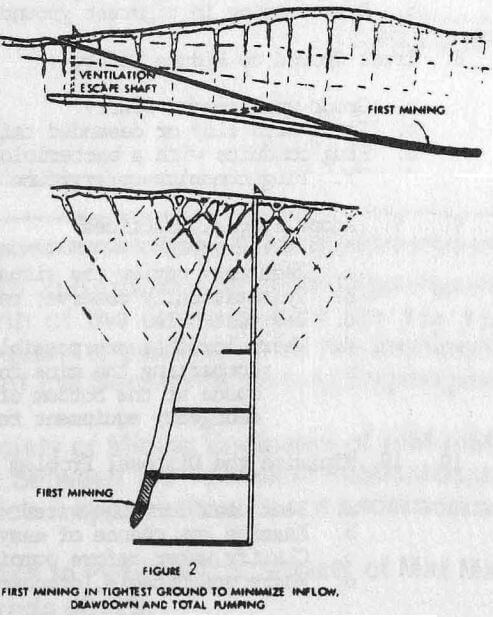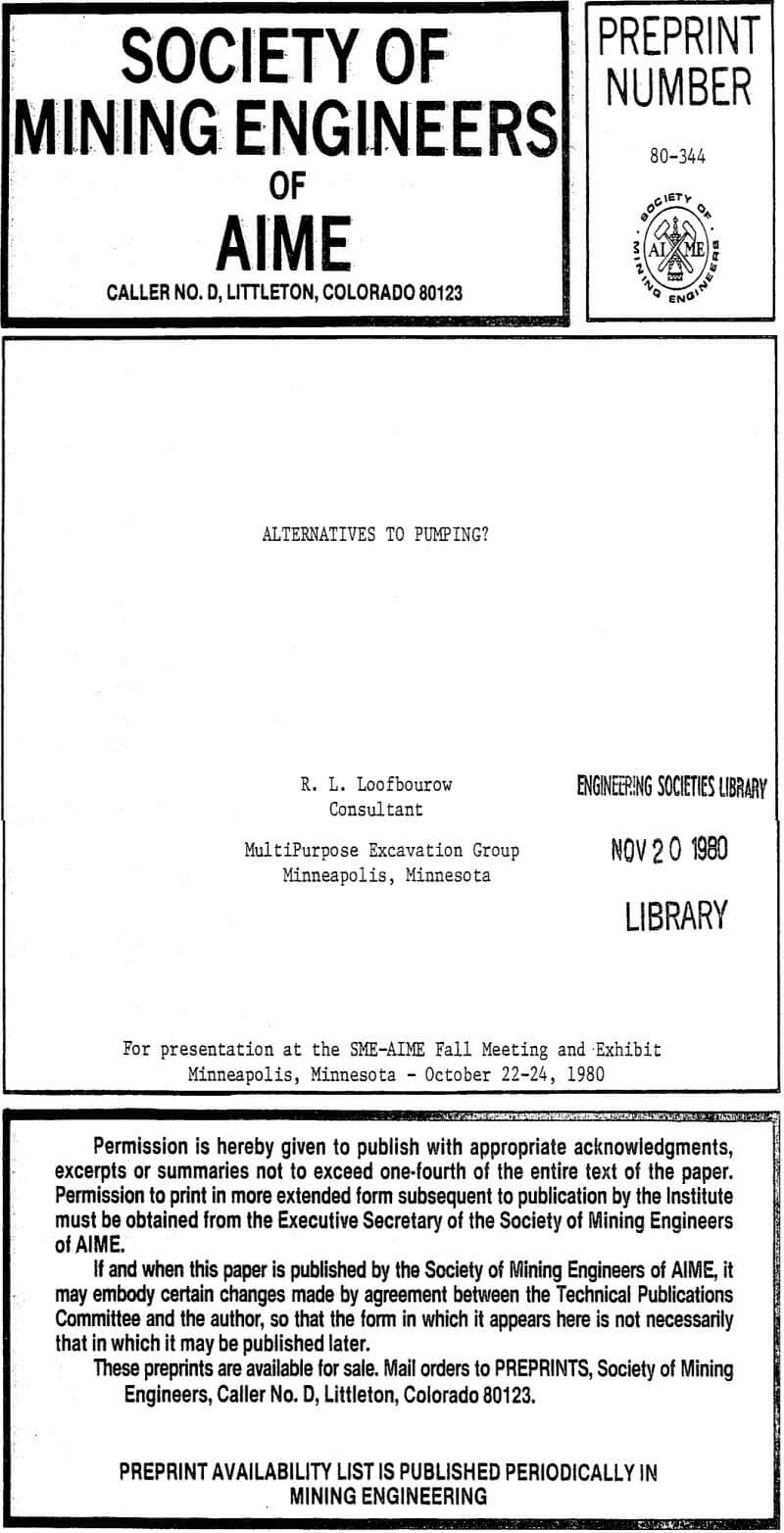The prime objective of this paper is to call attention to possibilities of reducing the cost of pumping, generally by reducing inflow into the mine area. A surprising number of ways have been used to do it.
To show the potential benefits of reducing pumping this paper emphasizes both the un-quantified and the obvious costs. Now both are multiplied by
x Increasing costs of power, labor, equipment and supplies
x Work at greater depth and in some cases, in wetter ground
x Increasing use of hydraulic fill
x Increasing protection of surface and groundwater sources
A recent discussion of mine water shows, with examples, seventeen easily overlooked groups of ways in which mine water may add to hazards and costs. Doubtless there are more. As to their importance, consider these examples:
– Increased maintenance of equipment, tires, roads and ditches
– Increased difficulty in supplying proper ventiliation
– Increased hazards from ice and use of electric power
– Loss of friable ore minerals, fines stuck on conveyances, in chutes
– Need to use more expensive methods, explosives
– Decreased productivity of equipment and personnel
Expressed as cost per unit of ore produced, these unquantified costs can be high. Ideally, advanced dewatering should eliminate most of them. It is a highly effective water control method, but it isn’t problem free. Mines in ideal ground for advanced dewatering are most unusual.
Check List Of Means To Reduce Pumping Cost
 Mine with Negligible Effect on the Static Water Level
Mine with Negligible Effect on the Static Water Level
a. Mine tinder water with draglines or dredges
b. Leach in place, perhaps mine through boreholes- Divert or Remove Surface Water
a. Divert rivers, drain swamps or lakes, ditch runoff
b. Flume streams, cover recharge areas
c. Clean slopes, plant low areas to increase evapo-transpiration - Intercept Shallow Water and Pump it at Low Heads
a. Catch it in shallow wells
b. Catch it on an upper level or in shafts - Exclude Shallow Water
a. Pregrout from the surface and grout from the shaft bottom
b. Bore shafts, usually with mud, and set casing
c. Drop shaft or wall with stationary slip forms
d. Freeze and place a tight lining
e. Dewater and case shafts through wet ground
f. Case or plug drill holes from surface or avoid them in mining
g. Map faults, fracture zones, other conduits; fill or avoid then
h. Drill test holes ahead of development and mining.
i. Plug any openings through which water enters - Introduce No More Water Than Needed for Dust Control, Sand Fill?
- Limit Subsidence Where Water or Thixotropic Inflow Might be Introduced
a. Mine so as to minimize or control subsidence
b. Leave pillars at critical places
c. Leave enough ground between large mine openings and any adjacent water body. - Defer Inflow
a. Sink shafts in tightest ground
b. Start mining in tightest ground or limit it to such - Treat Ground to Reduce Inflow
a. Grout with cement slurry
b. Grout with clay or desanded tailings
c. Plug conduits with a bacteriological precipitate
d. Plug conduits with a chemical precipitate
e. Plug conduits at surface when water in conduit is quiet
f. Plug conduits underground when water is quiet. - Adopt Special Practices
a. Regularly review the situation, perhaps with informed outside opinion
b. Systematically observe, record, and map data
c. Use test holes
d. Where inrushes are possible, consider:
comparting the mine to isolate trouble and facilitate recovery, leaving open space at the bottom of the mine to provide time, having a trained crew and emergency equipment ready, as a last resort in some cases, employing divers - Minimize the Disposal Problem
a. Seek uses for mine water
b. Examine any chance of easy disposal as punning into a low pressure aquifer
c. Clarify water before punping
d. Where practicable, discharge water through a drain adit.

